How to Repair Rotted Wood Trim
by: Dale Cox
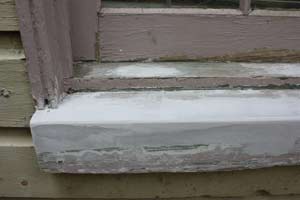
Wood, especially exterior wood trim molding, can become saturated with water and rot in isolated spots making it necessary to replace the whole thing to restore the trim. In many cases, to save the cost and work of replacement, this damage can be repaired with an epoxy wood filler.
Several manufacturers make a kit for repairing rotted wood like this that includes a stabilizer to harden the surrounding wood and a two-part putty which when mixed, will set to a rock-hard patch that can be sanded and painted just like real wood. It can also be drilled, cut, and shaped with the same tools used to work wood.
What You'll Need
- Wood Hardener
- Epoxy Wood Filler
- Paint Scraper
- Sanding Block
#1 - Remove the Rotted Wood
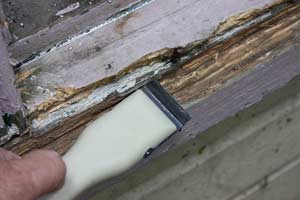
Before you start, make sure the area is completely dry and then dig all the soft, loose, and rotted wood away using a putty knife and paint scraper. Coat the sound wood that remains with a liquid stabilizer, this will harden the wood and form a solid foundation for the repair putty. A hardener like this is usually included in a repair kit or you can buy one like Bondo® —Rotted Wood Stabilizer— separately.
#2 - Reinforce Deep Damage
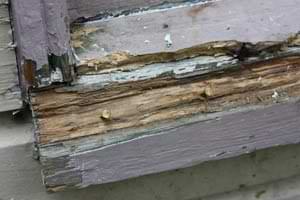
If the damage is very deep, drive nails into the sound wood, every few inches or so to reinforce the patching putty. Use nails with a broad head like sinkers and drive them so the heads are a bit below the finish surface of the wood profile.
#3 - Build a Form
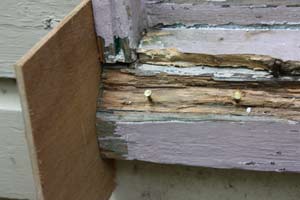
If the damage is very deep, build a form around the area to hold the epoxy shape until it sets. Use small pieces of thin plywood or a similar light, rigid material and tack them along the face of the wood profile on all exposed sides to form a cast.
#4 - Mix the Filler
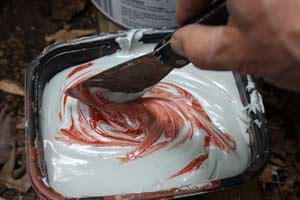
Epoxy filler like Bondo can be used to replace missing wood due to rot or gouges. Follow the directions on the container to mix enough epoxy to fill the damaged area. Use a small plastic tub like tupperware and a putty knife to mix the epoxy and apply it right away. If the patch is very deep it may take two or more applications to fill it out completely, let each application harden before applying the next.
#5 - Apply the Filler
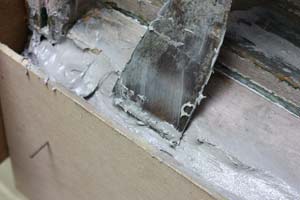
Once the putty is mixed, work quickly to fill the patch before it can set, usually 5 to 10 minutes. If you have small crevices that are impossible to reach with a putty knife, squeeze the epoxy into them using a plastic bag with a small hole cut in one corner as a funnel.
For deeper damage, pour the epoxy into the cast while using a putty knife to push it into all the sides. On vertical surfaces the filler will run off and must be held in place with a piece of plywood or other rigid, flat material until it sets.
#6 - Fill the Form

Fill the form to overflowing with epoxy to allow for sanding and shaping it to form the new wood surface. In order to restore the surface, the filler must protrude above the original level of the surrounding trim.
#7 - Shape the Filler
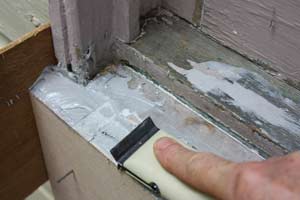
As soon as the epoxy has set you can begin honing it to the shape you need. Remove the plywood form and use a paint scraper to shave the excess down to a rough surface that's level with the surrounding wood. Work before the putty can harden completely, usually about 20 or 30 minutes.
After scraping off the excess filler, mix a small amount of epoxy and apply a thin coat over the whole repair to fill in any pits or scratches in the surface.
#8 - Sand to Finish
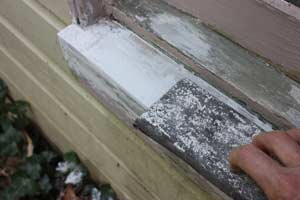
Let the filler set and sand the surface smooth using 80 and then 120 grit sandpaper. Use a sanding block to make removing the hard material easier and to help keep the surface level and square.
When the patch has set completely and is no longer warm, prime with an oil-based primer and then paint it with the rest of the wood.
 How to Caulk
How to Caulk